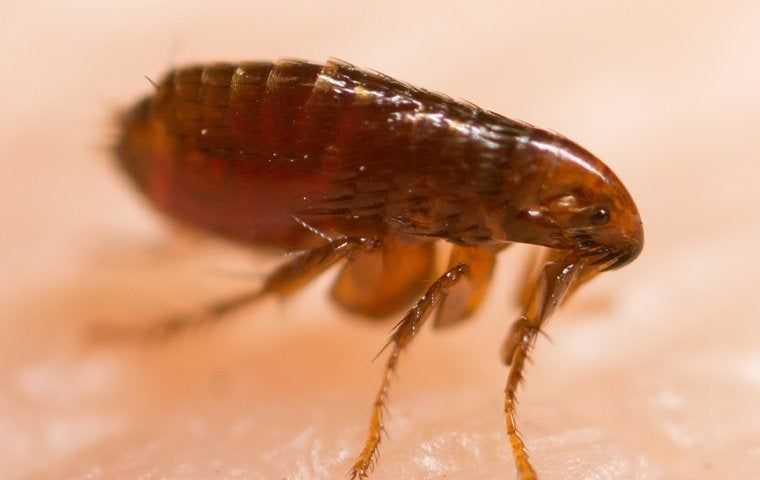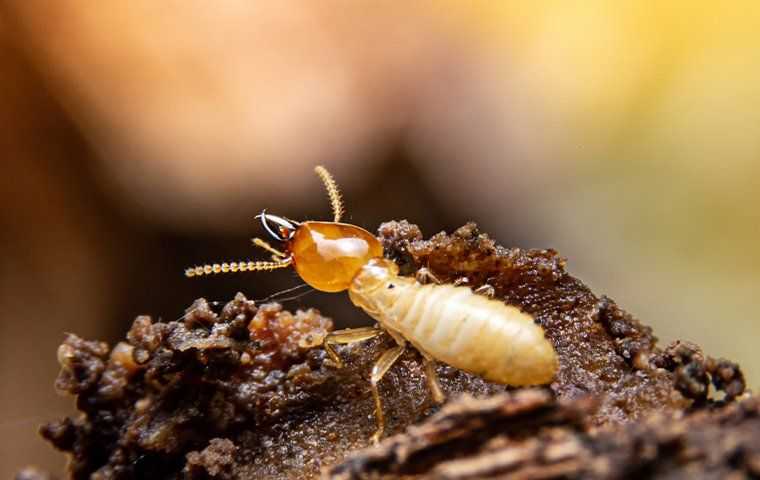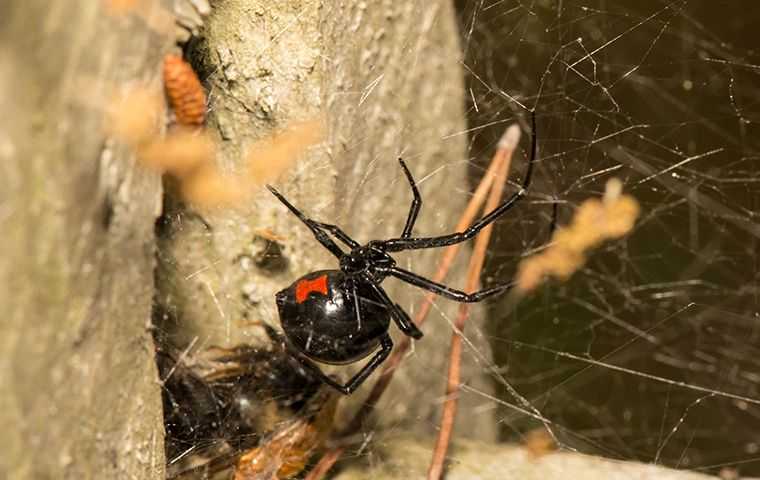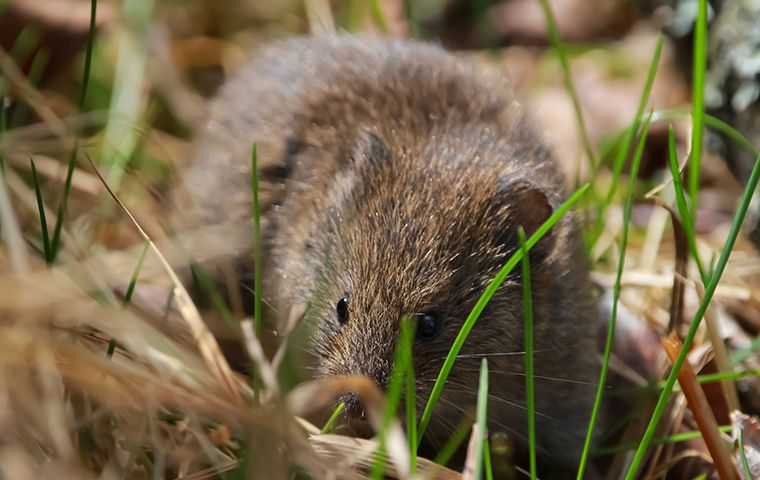Fleas are frustrating pests. One of the reasons they're so frustrating is that they have strange and mysterious behavior patterns. If you're wondering whether or not you have fleas in your home, or you're wondering what to do about a flea infestation, you'll find what you need here. We'll look at flea identification and five ways to prevent flea infestation with all-natural control methods. If you've been scratching your head (and other parts of your body) trying to figure out a flea infestation and you just want fast relief, feel free to contact us. HomeShield Pest Control provides advanced solutions for pest control in Los Angeles County. With that said, let's get into our subject for today.
Is This A Flea?
There are many ways to identify a flea in your Los Angeles home. Let's start with a physical description. If you find a flea in your home or on your pet, it will look like this:
- A flea is about ? of an inch in length.
- Fleas are insects, and insects have six legs.
- Fleas are dark brown but appear redder after a blood meal.
- Fleas are flat, but not flat vertically like a cockroach. They are flat horizontally. They are much taller and longer than they are wide.
- Fleas are rounded at the top when looked at from the side. Often they're seen fleeing into fur or hair and just look like a flat, brown dot disappearing like a phantom. Perhaps they're called fleas because they flee when you expose them. But we digress.
Here are several more ways to identify fleas and detect a flea infestation.
- Fleas will leap up at you from the floor. They spring up and attach to your lower legs. If you see insects springing through the air, but they have no interest in attaching to you, they're likely springtails, not fleas.
- Check your dog or cat with a flea comb and search for adult fleas or flea dirt. If you're unfamiliar, flea dirt is the fecal matter of adult fleas. It looks like tiny black flakes.
- Look for flea bites. These pests prefer to feed on dogs and cats, but will take to biting people. You'll likely find bites on your lower legs, ankles, and feet, but fleas can bite in other places if you have infested furniture. If you find bites on your back, it is evidence that you have fleas in a couch or living room chair. Flea bites tend to look inflamed and often have scabs because they're incredibly itchy.
- You can trap fleas to help you examine them closely. A simple home solution to trap fleas is to use a desk lamp, plate, dish soap, and water. Put a plate on the floor, put water and a small drop of soap in the plate, and put the lamp over the plate. When the fleas jump at the heat of the light, they'll fall in your solution and drown. Don't use this tip to arrest an infestation because you won't catch all the fleas in your home, even if you use a bunch of traps.
Once you determine that you have a flea infestation, you need to evaluate your flea problem and decide on the best solution to address the flea infestation. It is easy to apply a flea treatment. Knowing how fleas impact your health can provide the necessary motivation.

Are Fleas Harmful To Humans?
In most cases, fleas are not a danger to humans. Not every flea that bites you is infected with a human pathogen, and all flea diseases (even the worst ones) can have mild symptoms or no symptoms at all. The primary issue with flea-borne diseases is that people don't realize fleas are making them sick. They mistake the symptoms of these diseases for the flu or common cold. If you have a fever, chills, nausea, vomiting, loss of appetite, body aches, muscle pain, stomach pain, cough, or rash, you may have flea-born typhus (Rickettsia typhi). Fleas also commonly spread Bartonella bacteria, which can cause cat scratch disease (CSD). In rare cases, humans can get sick from tapeworms, but most people are able to pass these worms through their system.
Five Eco-Friendly Flea Prevention Tips
Flea control is somewhat unique in that fleas can enter your home in a variety of ways. Let's take a look at each of these ways and several tips that can help you guard against a flea infestation.
1. Deter Wildlife
Furry and feathery animals bring fleas into your yard. As animals move about, they drop flea eggs and flea dirt. When the eggs hatch, the flea larvae emerge and feed on the flea dirt, which is the feces of adult fleas. The larvae develop into adults near your home and are in the perfect position for your dog or cat to pick them up and bring them inside. Wildlife deterrents are the first step in flea prevention. Here are some tips:
- Keep bagged trash in covered containers. Animals get into trash.
- Pick up nuts and fruit. There are many animals that eat nuts and fruit. While this task is laborsome, it will help you deter a long list of pests, not just fleas.
- Move bird feeders, so they are not near your home. Many animals eat seeds as a dietary staple.
- Use hardware cloth to protect the void underneath your deck. When animals get underneath decks and bed down or create a nest, they create the conditions required for flea development. Flea larvae can't survive without flea dirt because they are unable to bite and draw a blood meal. They get the blood they need from flea dirt. A still animal will drop eggs, and flea dirt in one location, so emerging larvae have quick and easy access to the food they need for survival.
It is nice to have animals in your yard, but animals that get close to the exterior of your home, or that get underneath structures, can create a flea problem in your home.
2. Protect Your Pets
Your dog and cat can bring fleas in from the outside. You can guard against this by applying flea control products prescribed by your veterinarian. Keep in mind that not all products are suitable for all pets or families.
- Your frontline defense is a flea collar, but you should know that a flea collar does not provide a complete solution. They can fail.
- Some people get medication that makes their dog or cat taste bad to fleas.
- Some people use a spray product that repels fleas.
- When fleas are found on your pet, a flea bath or flea powder can help you address the problem.
- If you have a dog, a constructed exterior area can guard your dog from picking up fleas while outside. Fences deter wildlife from getting in, and they work to prevent your pooch from exploring your exterior and acquiring fleas.
- Use a flea comb to perform routine checks of your pets when they come inside. Look for adult fleas or flea dirt in hair or fur.
Flea control products for your pets help with prevention and control. It is always good to have them on hand.
3. Inspect Used Furniture
When you get a lightly used piece of used furniture, you may get a lightly used flea infestation. Fleas can infest furniture items. Perform a detailed inspection and look for the following warning signs:
- Leaping fleas.
- Specks of flea dirt.
- Tiny dark-colored worms.
In most cases, it is easy to detect flea activity in furniture. But you won't detect fleas if you don't look for them, so be diligent.
4. Guard Against Rodent Infestations
Rats, mice, squirrels, and other animals can bring fleas into your home. Rats and mice are particularly adept at it. They bring fleas in and sprinkle them around your home. You can prevent them from doing this if you perform exterior inspections and seal potential points of entry. Here are some common ways these pests get inside:
- Underneath doors that have no sweeps
- Past gaps around pipes and PVC conduits
- Under crawlspace skirting
- Through holes in window and door frames
- Through unprotected vents
- Through the small opening at the base of storm cellar doors where the two doors touch
Replace building materials and apply silicone caulk or expanding foam to seal gaps or fill in holes. When using expanding foam, be sure to wear gloves. That stuff is hard to get off.
5. Address Flea Habitation
Fleas need damp or humid habitats to survive. They do well in shaded locations, such as under a porch. You can keep them out with wildlife management. You also need to consider tall grass, dense vegetation, clogged gutters, leaf piles, and other conditions that create damp habitats. Yard work and gutter cleanings are critical care for the health of your home, and they have the side benefit of deterring flea development.
The Most Effective Flea Control For Los Angeles County Properties
HomeShield Pest Control provides all of the solutions needed to stop fleas in Los Angeles County. We offer flea treatment for your yard, indoor flea treatments, rodent control, and wildlife management. Our experienced and highly-trained technicians can diagnose even the most mysterious flea problem. Give us a call. You don't have to battle fleas anymore. Help is on the way!






















